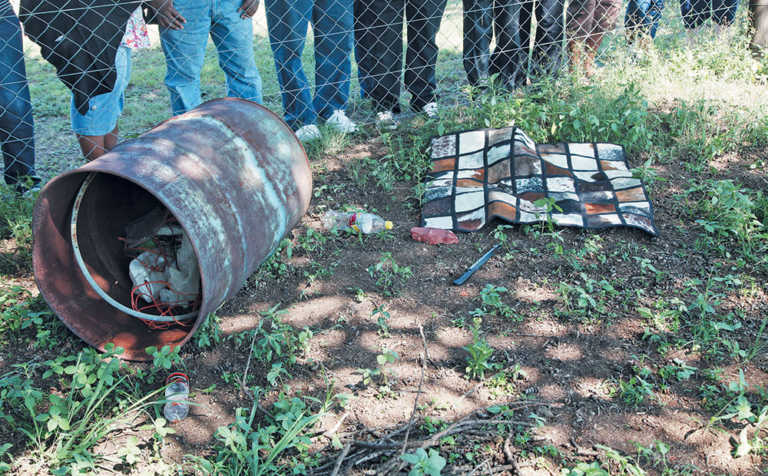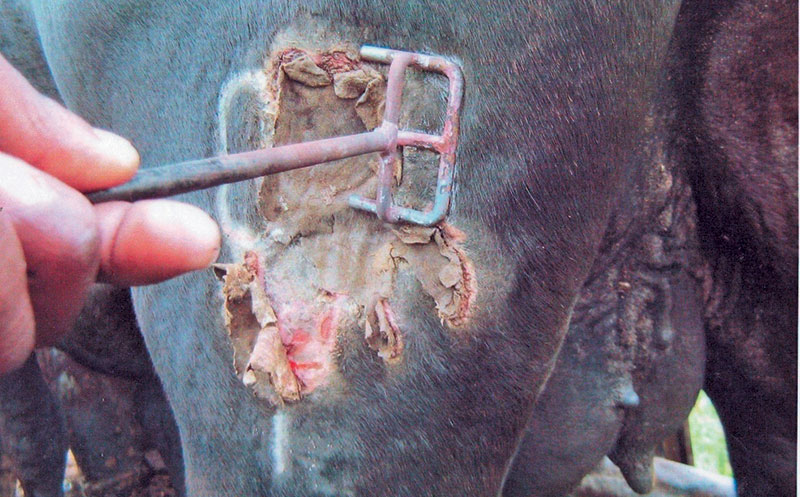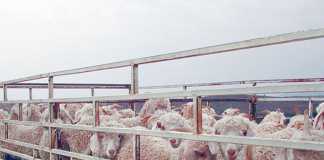
Stock theft in South Africa currently costs the livestock industry approximately R500 million a year.
Yet well-informed prosecutors, policemen and farmers can use simple logic to secure criminal convictions and help reduce this theft, according to Mort Mortassagne, cattle farmer, former policeman and expert witness in over 900 stock theft cases.
“Every animal is unique and will have [some] permanent marks from being handled over the years. These can all be used for identification purposes to link stolen livestock to their owners’ herds,” says Mort.
READ Tips for stress-free livestock transporting
Taking these factors into account and using research, DNA and circumstantial evidence, prosecutors can reconstruct a case successfully and secure a conviction.
To achieve this, however, they need some understanding of stock handling methods, as well as the correct usage of livestock farming terminology, he explains.
According to Mort, many thieves do their best to change the appearance of livestock shortly after it has been stolen. Typically, they dehorn, remove ear tags, or smudge brand marks with a hot spade or other object.
The prosecutor therefore has to link evidence to an animal whose appearance may have been changed, or to a farm that may be kilometres away from where animals or parts of animals have been found.

Being able to match wool, ear notches, branding, dehorning methods, castration and age to stolen livestock is crucial.
Language barrier
Often, the first obstacle encountered when trying to secure a conviction in a stock theft case is the language barrier.
“An Afrikaans-speaking farmer may have to speak English in court. A Zulu-speaking prosecutor has to do the same, and they would be [required] to describe the colour of an animal that, for example, is not just pure brown or red. [This leaves] room for mistakes, and any doubt may mean that one can’t get a conviction. How does one describe a Nguni’s colour?
I had a case where a farmer described the colour of his cattle as the colour of soil. The translator, who was from the coast, translated it as yellow, but the farmer was from the KwaZulu-Natal Midlands, where soil is dark brown,” Mort recalls.
To avoid this kind of confusion, Mort designed a stock theft colour chart that has been distributed to police stations in KwaZulu-Natal. This enables complainants to indicate a colour according to a number.
In another example of misunderstanding, many people talk about cows when referring to cattle in general. When a prosecutor does this throughout a court case, the defence can simply show that the animal in question was a bull or an ox, and the case can be lost.
The wool advantage
“People don’t realise that wool has many advantages when used as evidence in stock theft cases,” Mort says.
In a case four years ago in Ermelo, Mpumalanga, Mort followed the trail of a ewe and lamb stolen from a farmer with only tufts of wool as evidence. This was found on fences as well as in a garden shed at the alleged stock thief’s home.
The wool, along with droppings, were sent to a laboratory for testing. Control samples from both the farmer’s herd and the alleged thief’s herd were also taken.
The results indicated that the samples were from Mutton Merino sheep that could be
linked to the farmer’s herd. In addition, the results showed wool of a high quality, which could only be the result of a particular diet followed by the sheep in question.
Samples of soil found on the wool also corresponded with the soil on the farmer’s land. Moreover, the wool growth indicated that the sheep had been shorn in October that year, which the farmer had done.
“All this circumstantial evidence was presented to the court. If this hadn’t been done, there wouldn’t have been a conviction,” Mort recalls.
Droppings can also help to tell a story. Those containing leaves and bark, for example, are from goats.
“The prosecutor must lead the witnesses in court and ask relevant questions relating to specific cases. He can only do this successfully if he’s well-informed himself,” Mort says.
Documentation
Stock thieves can be charged with several offences, as there are a number of laws that can be contravened.
Some thieves slaughter animals immediately for their own use, others slaughter animals for the purpose of selling the meat, while still others steal livestock to build their own herds or sell stolen livestock at auctions.
“The Stock Theft Act 57 of 1959 Section 6 (Document of Identification) states that ‘any person who disposes of stock by any means, has to supply a person receiving the stock with a Section 6 document. This document has to stipulate all the details of the seller and the purchaser, as well as the destination and the date of sale. This document has to be kept for one year’,” Mort explains.
According to a Section 8 (Removal Certificate), “no person shall drive, convey or transport any stock or produce of which he is not the owner, unless he has a certificate issued to him by the owners of such stock or produce”.
Most of the requirements of these two documents overlap, so they can be combined into one. Likewise, all abattoirs must be registered and are required to produce proof of registration when requested by an inspector.
If an abattoir owner is unable to comply, the abattoir is deemed illegal and all the meat seized.
Dehorning
Wire cutters, saws, dehorning clippers and gas burners used to stop bleeding after dehorning all leave distinct markings, which can assist with the identification of particular animals or animals from a herd dehorned in a specific manner.
Horns of recently dehorned livestock look different to those rounded off by scratching or bumping over time. A freshly cut horn shows clear markings. If a complainant reports that the horns had been cut, the police should photograph the horns of the animal in question.
During the trial, the accused and the farmer can then be asked when and how the animal was dehorned, and the markings on the horn can then be matched to those on the farmer’s other animals.
Ear notches
According to Mort, 90% of rural communities use ear notching as an identification method. If carried our with ear notching pliers, physical matching is easy. He advises farmers to use two different ear notching pliers – a triangular and a round shape, for example.
In this way, the animals will have unique markings that can be linked to a specific farm, and criminals cannot easily alter markings to match those of their own herds.
In court, photographs can be used to show how the ear markings of the stolen animals match those of the farmer’s other animals.
Farmers should take note that the flesh around the notches at the top or bottom of an ear grows and the size of the notches will therefore change.
The least growth takes place at the tip of the ear and this is therefore a better location for markings, as well as an easier area to match to pliers.
Even if an ear mark has been altered, parts of the cartilage that thickened after damage from marking may still be a match and can form part of a prosecutor’s circumstantial evidence.
Ear tags are usually removed by thieves, but once removed, the hole left by the tag will remain free of oil and dirt for at least a month.
Other factors
Prosecutors also need to know that every abattoir has a distinctive, registered roller mark that can be used to verify whether a suspect is telling the truth about where meat was bought.
Mort cites an incident in which six sheep were stolen from open veld on a farm. It had been suspected that they were illegally slaughtered at a specific abattoir.
However, documentation indicated that the abattoir bought animals only from feedlots, and the lower fat content of the six veld-reared carcasses was immediately evident, as it was winter and the animals were thin.
Aggravating circumstances
When sentence is passed, previous convictions must be taken into account. Penalties can range from suspended sentences and fines to prison terms.
If aggravating circumstances are not presented to the court, the presiding officer cannot impose severe sentences, resulting in offenders re-offending within a short period, Mort says.
“[Rural] communities need to see that justice prevails in stock theft cases as their livelihoods are affected,” he explains. “Prosecutors must know that investigating officers, or persons being deprived as a result of theft, can sit on parole boards, and say that the community doesn’t want a convicted stock thief to be granted parole, as their livelihoods are affected by his return to the community.
“When I undertake an investigation, I need transparency. If the accused has been
charged with the offence, then he needs to be present when further investigation takes place, and if he has an attorney, this person also needs to be present.”
When taking DNA samples, Mort gives the accused a forensic science bag number,
so that when a DNA test report is returned, both he and the accused have the same number. This helps to ensure a watertight case.
In cases under tribal authority jurisdiction, Mort requests that both the accused and complainant describe the animal in question in the presence of the tribal chief.
Information on how the animal was handled over the years, its age, markings due to injuries and disease, and brands are also recorded. Stock thieves would not have most of this information.
When Mort has finished the questioning, the animal in question is viewed and the markings on the animal are compared with the sketches made during the hearing.
“In most cases, a decision is reached immediately and no one questions the outcome,” he says.
Tatooing
A very small percentage of smallstock in South Africa are tattooed. Mort advises farmers to separate lambs from their mothers for a short period immediately after tattooing, as mothers will lick the wound and the tattoo will not remain in place.
Farmers should remember that the Animal Identification Act 6 of 2002, states that smallstock must to marked (tattooed) at the age of one month.
Stock thieves often cut off tattooed ears, so markings should be placed in such a way that this practice is discouraged. If an ear is removed, prosecutors can lay an additional charge, as, according to law, only a vet is allowed to remove ears for health reasons.
Brand marks
There are about 650 000 registered brand marks in South Africa, each unique to the person, trust or company that applied for them. A registered mark can consist of one to three symbols.
These are issued to the registered owner in a variety of configurations.
Many prosecutors, defence attorneys and even magistrates do not know how the symbols should be read. This can lead to confusion if marks are presented in the wrong configuration.

Using single letter branding irons spaced wider apart is preferable; these are not as easy for thieves to smudge. Custom-made branding irons are even better.
Stainless steel branding irons also make a more effective mark with less smudging than other metals.
Mort recalls a case where the hides of stolen animals were found damaged and smudged. He peeled the damaged skin layers off the hide until he could identify the original brand.
“It’s a lot of work but you get convictions this way,” he says.
Phone Mort Mortassagne on 083 557 9975, or email him at [email protected].












